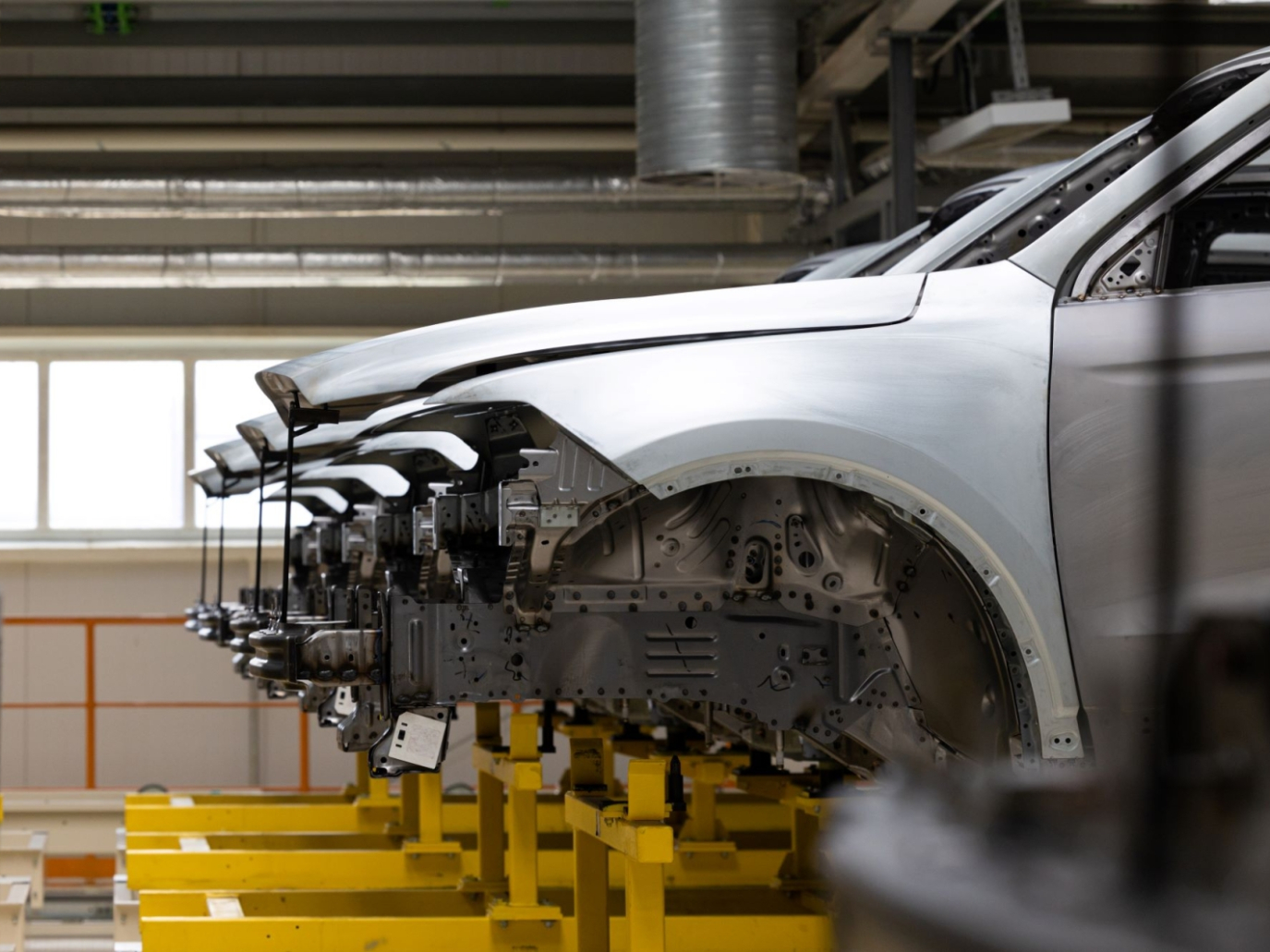After months of debate and heated discussions on fuels – diesel, petrol and e-fuel – something new is emerging in the automotive sector. “Better designs” is the indication given by the European Commission to the automotive sector through the regulations on vehicle circularity approved on July 13, 2023. Design for circularity is a fundamental prerequisite to be able to create EPR systems even for products as complex as vehicles.
How much material does the automotive industry consume?
Limiting our scope to the European continent, it’s clear that the sector is still far from the EPR scenario of other industrial sectors, even though for some of the components or products that are part of the ‘vehicle system’ – such as tyres, mineral oils and batteries – effective end-of-life management mechanisms have long been in place.
But everything else? There is a stark contrast between the evolution in vehicle use and ownership patterns and the reality of a sector that sometimes still appears to be tied to the so-called ‘Golden Age of the automobile’. A surprising result for a sector in which product design, for better or worse, has never been ancillary.
In setting the context of the new regulation, the drafters of the document provide a number of useful data to understand the weight of the automotive industry in terms of material consumption in Europe. Vehicle production accounts for 19% of the demand for the European steel industry, 10% of plastics consumption, 42% of aluminium (in all transport vehicles), plus copper (6% for automotive components), rubber (65% of the production for this material) and glass (1.5 million tonnes of float glass produced in the EU). Considering other minor contributions, is it possible to assume that this figure exceeds 15 million tonnes of material per year? Probably so. Moreover, the growth of electronic content in vehicles calls for a progressive increase in demand for copper and critical raw materials.
Also read: AT THE HEART OF THE CIRCULAR ECONOMY
From a directive to circular design
Currently, the end-of-life management of this material is regulated by the End-of-Life Vehicles Directive 2000/53/EC, better known as the ELV Directive. The stakeholders involved are divided among manufacturers on the one hand and recyclers and car dismantlers on the other. While, according to the new rules, the latter should be given full and transparent information about what they receive, the responsibility of providing this information, which includes safety instructions for components removal, lies with the manufacturers. The assumption that a new series of rules could throw the system out of balance raised some concerns, especially on the side of those who are currently at the end of the process, namely dismantlers and recyclers. They all feared that a new EPR scheme focused on the manufacturers would essentially take the ‘matter’ (and work) away from them.
The EU Commission’s plan, however, is perfectly logical: if the car manufacturer has an obligation to fully inform about the contents of the goods they put on the market, a circularity-oriented design will only make things easier. For a “smooth operation of the internal market”, as reported in the directive, the design of new vehicles must facilitate the reuse, recovery and recycling of their components and materials.
As in other sectors with a high degree of product complexity (e.g. the construction industry), a series of measures have therefore been envisaged for the automotive sector to ‘smooth out’ the obstacles that still hinder its end-of-life management. Among these, there is the idea of a digital Circularity Vehicle Passport, similar to the Material Passport concept formulated and tested by Thomas Rau in the construction industry.
Towards an EPR system in automotive
The difficulties highlighted in the EU document include the ever-present gap between vehicle design and production, which results in a disproportionate dependence on the use of virgin raw materials. Then there is the suboptimal quality of the treatment of end-of-life vehicles compared to their potential in terms of economic and environmental value. Lastly, there is the issue of missing vehicles, end-of-life cars that leave the ‘official’ routes, often ending up in third countries as part of a market of polluting vehicles, frequently unsuitable for circulation. This is also due to an unclear distinction between end-of-life and used vehicles.
There are a number of obvious strategies to overcome these difficulties: encouraging the circular design and production of vehicles by increasing their share of recycled raw materials (e.g. the proposed target of a 25% of recycled plastics in vehicle manufacture); improving the quality of end-of-life treatments (again, with a target of 30% of plastics to be recycled); increasing the capacity of end-of-life vehicle collection systems (see under missing vehicles); and above all including more vehicle types (e.g. trucks, buses, trailers, motorbikes) in the new regulations.
Finally, proper incentives will be needed to make the whole system more efficient and improve waste management through the adoption of EPR schemes. But what can a vehicle EPR system be like? An example fulfilling many of the requirements of the new European regulation comes from Sweden, where anyone who manufactures, imports or otherwise places cars, light trucks, motorhomes and buses weighing up to 3500 kg on the domestic market falls under an EPR scheme and was thus obliged to register with the National Environmental Protection Agency by April 30, 2023.
Ecodesign for automotive
The Swedish EPR system has very clear rules, emphasising the role of vehicle manufacturers, who are considered liable for the disposal of end-of-life vehicles. To this end, they must guarantee, either personally or by relying on other operators, the existence of an adequate collection system, which is described in detail, including communication of all crucial information between manufacturer, car dismantler and Environmental Protection Agency. The automotive industry is also responsible for ensuring that their products meet the recycling and reuse targets for the sector. Once again, the role of design is key.
There are several cases documenting the increasing use of recycled or biobased materials in automotive components, while “disassembly chains” or systems have been discussed for years. While this still seems to be a work in progress when thinking about the entire vehicle, many manufacturers have already developed recovery and remanufacturing systems for specific parts to be reconditioned. All these processes, however, deal with the existing product. For a truly circular design of vehicles, reducing the number of components, disassembly, modularity, reduction of the quantity and diversity of materials, and their Carbon Footprint assessment are key elements.
If implemented correctly, all this should lead to a significant reduction in the sector emissions, a better valorisation of over 5 million tonnes of materials per year, the creation of work – Thierry Breton, EU Commissioner for the Internal Market, foreshadows the creation of about 22,000 jobs – and new net revenues of EUR 1.8 billion by 2035.
This article is also available in Italian / Questo articolo è disponibile anche in italiano
Image: Envato



